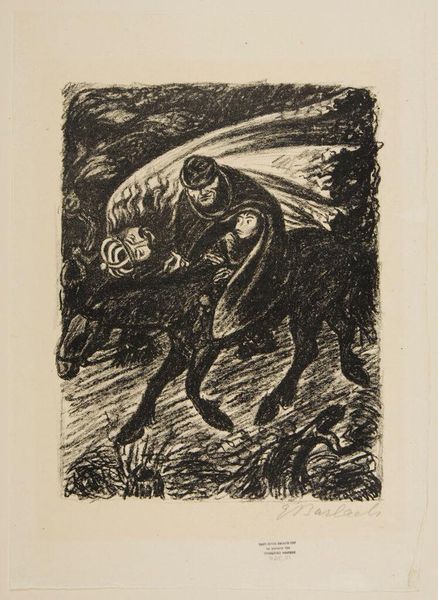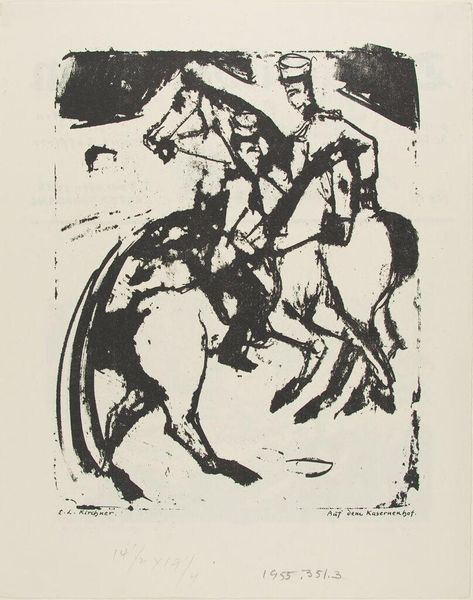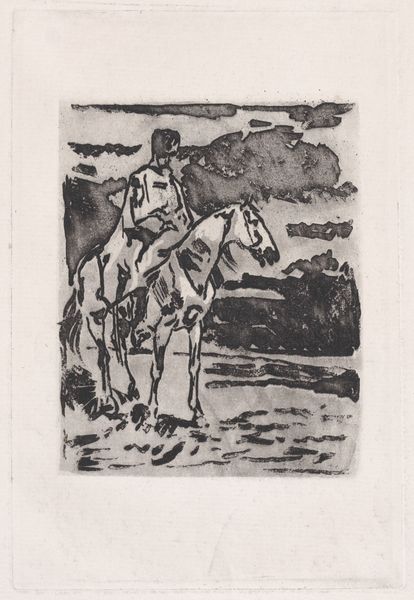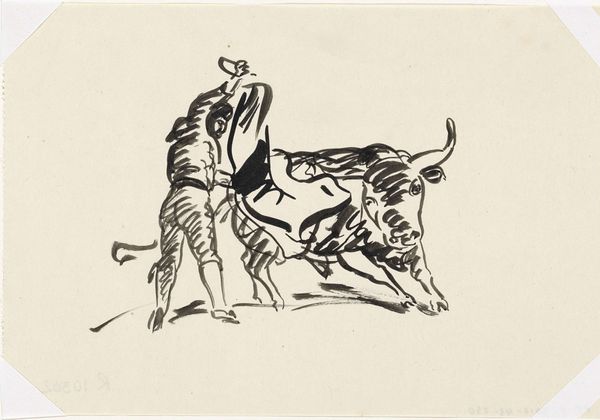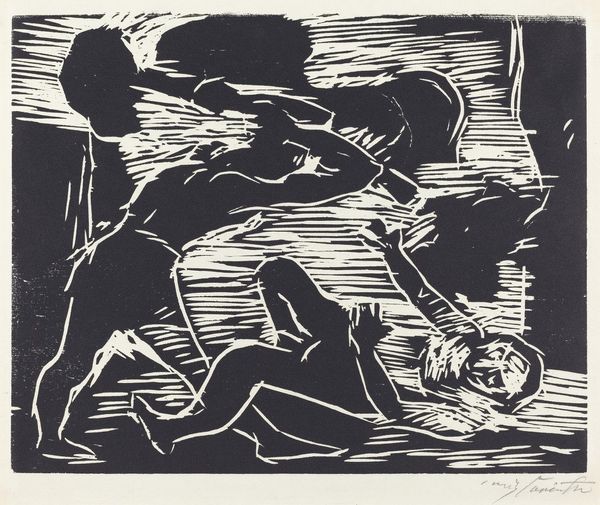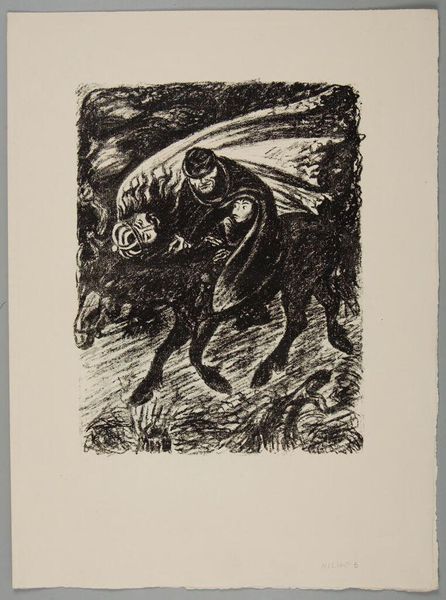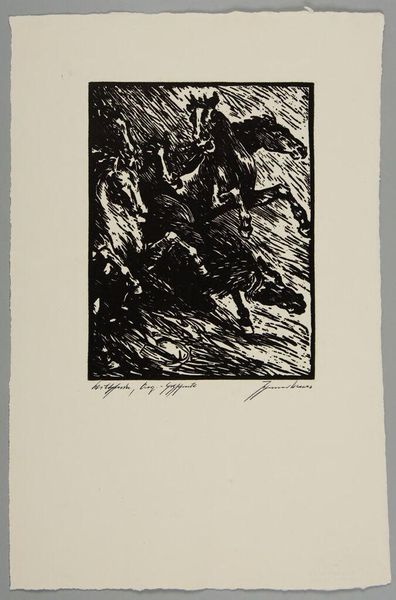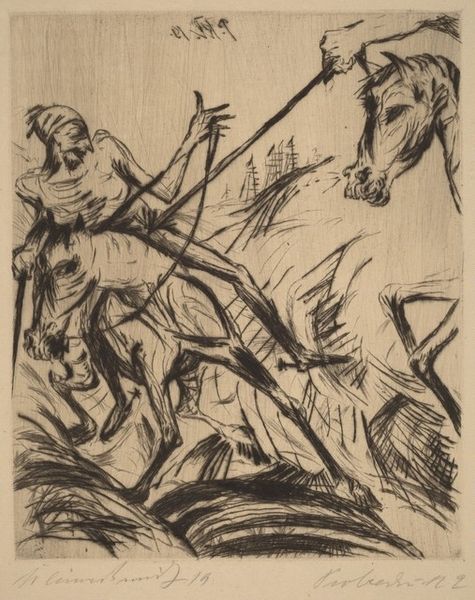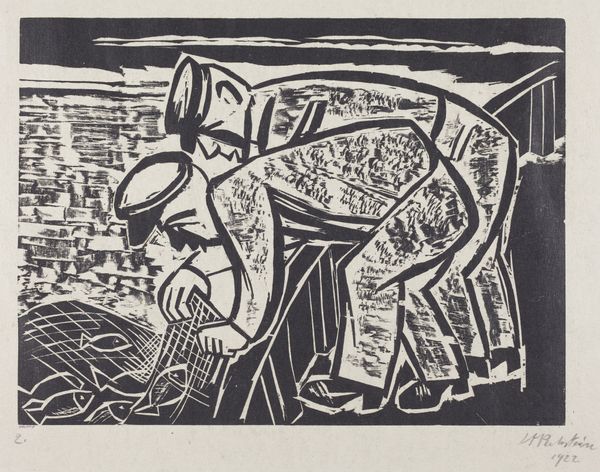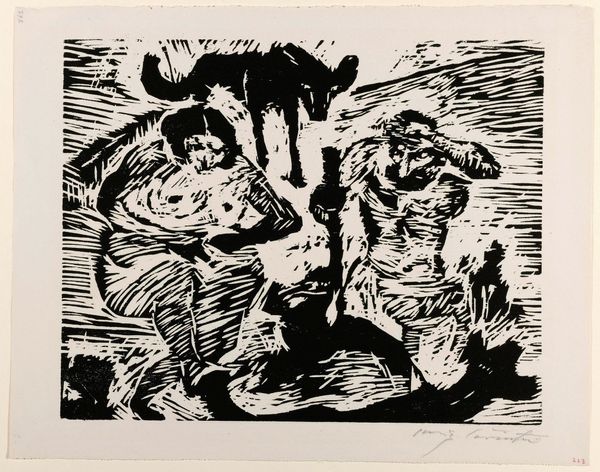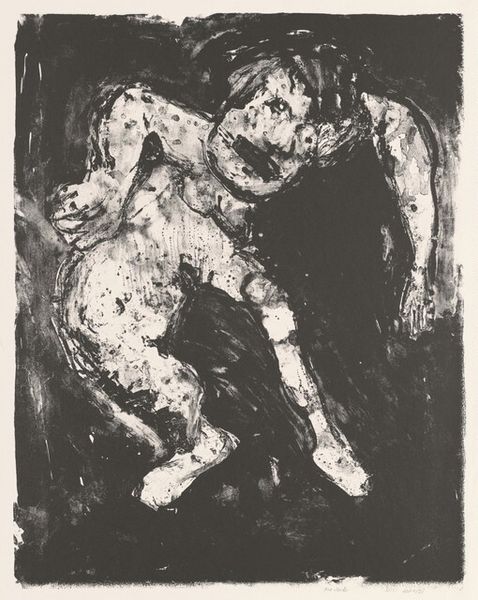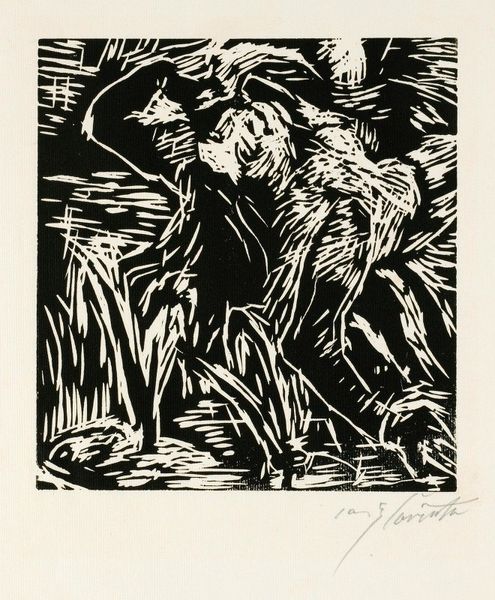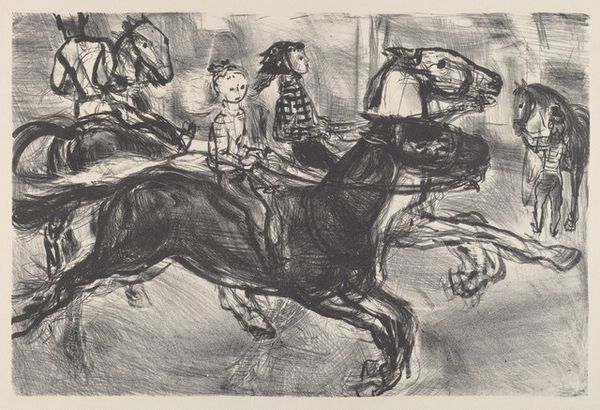
print, woodcut
# print
#
landscape
#
german-expressionism
#
figuration
#
linocut print
#
expressionism
#
woodcut
Copyright: Public Domain: Artvee
Curator: Lovis Corinth's 1920 woodcut, "Mann und Pferd," immediately strikes one as quite stark. Editor: Yes, there is an undeniable drama evoked by the extreme contrasts and the raw energy practically jumps off the page, wouldn't you say? It has a sort of pent-up frantic energy. Curator: Agreed. The bold, black linework carving method generates a dynamic tension. I notice the way Corinth uses stark juxtapositions of black and white, eschewing gradations, which certainly intensifies the expression. Notice also how the reductive composition adds weight to the expression of form? Editor: The reduction of the scene allows it to become iconic. This artwork clearly places its roots within the context of German Expressionism after World War I, when anxieties of modernity fueled distortion of form and symbolism to mirror alienation. The choice of subject itself is potent with symbolic possibilities. Horses have historically carried powerful metaphorical associations. Curator: And observe Corinth's handling of positive and negative space! It's very compelling how areas of white serve to highlight form, how areas where white is gouged-out helps to clarify and emphasize the action. Also, did you notice how off-balance this artwork seems to feel? It lacks compositional equilibrium to underscore the turbulent nature of both figures: The human figure tugging desperately at the horse's lead suggests the turmoil and perhaps the loss of control. Editor: The starkness also contributes to the piece's potent and discomforting character; it speaks to the era’s trauma after experiencing unprecedented human catastrophe that led artists to examine human psychology in its darkest moments, even going beyond realism toward more emotionally resonant symbols that cut deeper still! Curator: Absolutely. It’s precisely that feeling of precariousness communicated through compositional means that makes it so viscerally engaging. Editor: I appreciate your close reading of its construction. This print feels historically crucial—a tangible artifact of post-war unease given form! Curator: And for me, analyzing these forms so closely, the interplay of black and white and all, shows an understanding of visual balance despite the subject's turmoil. A testament to great craft.
Comments
No comments
Be the first to comment and join the conversation on the ultimate creative platform.
